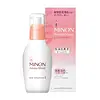What's inside
What's inside
 Key Ingredients
Key Ingredients

 Benefits
Benefits

 Concerns
Concerns

 Ingredients Side-by-side
Ingredients Side-by-side

Water
Skin ConditioningAlcohol
AntimicrobialGlycerin
HumectantAngelica Acutiloba Root Extract
Skin ConditioningCoix Lacryma-Jobi Ma-Yuen Seed Extract
Skin ConditioningDipotassium Glycyrrhizate
HumectantHamamelis Virginiana Extract
AntiseborrhoeicPseudostellaria Heterophylla Extract
Tocopheryl Acetate
AntioxidantTriticum Vulgare Germ Oil
EmollientCitric Acid
BufferingDi-C12-15 Pareth-8 Phosphate
CleansingEthylhexyl Methoxycinnamate
UV AbsorberPolysorbate 80
EmulsifyingSodium Citrate
BufferingSorbitan Sesquioleate
EmulsifyingTriethylhexanoin
MaskingEthylparaben
PreservativeMethylparaben
PreservativePropylparaben
PreservativeParfum
MaskingWater, Alcohol, Glycerin, Angelica Acutiloba Root Extract, Coix Lacryma-Jobi Ma-Yuen Seed Extract, Dipotassium Glycyrrhizate, Hamamelis Virginiana Extract, Pseudostellaria Heterophylla Extract, Tocopheryl Acetate, Triticum Vulgare Germ Oil, Citric Acid, Di-C12-15 Pareth-8 Phosphate, Ethylhexyl Methoxycinnamate, Polysorbate 80, Sodium Citrate, Sorbitan Sesquioleate, Triethylhexanoin, Ethylparaben, Methylparaben, Propylparaben, Parfum
Water
Skin ConditioningGlycerin
HumectantButylene Glycol
HumectantPropanediol
SolventMethyl Gluceth-20
HumectantPEG-75
HumectantSerine
MaskingBetaine
HumectantSodium Citrate
BufferingDipotassium Glycyrrhizate
HumectantPEG-50 Hydrogenated Castor Oil Triisostearate
EmulsifyingPhytosteryl/Octyldodecyl Lauroyl Glutamate
Skin ConditioningPhenoxyethanol
PreservativeArginine
MaskingCitric Acid
BufferingPEG-60 Hydrogenated Castor Oil
EmulsifyingTocopherol
AntioxidantSodium PCA
HumectantAlanine
MaskingLysine Hcl
Skin ConditioningPCA Ethyl Cocoyl Arginate
MoisturisingGlycine
BufferingCeteth-20
CleansingThreonine
Valine
MaskingHistidine
HumectantProline
Skin ConditioningLeucine
Skin ConditioningPentasodium Pentetate
Carnosine
Skin ConditioningPolyquaternium-61
Skin Conditioning1,2-Hexanediol
Skin ConditioningHydrogenated Lecithin
EmulsifyingPolyglyceryl-10 Laurate
Skin ConditioningSodium Hyaluronate
HumectantHydrolyzed Hyaluronic Acid
HumectantWater, Glycerin, Butylene Glycol, Propanediol, Methyl Gluceth-20, PEG-75, Serine, Betaine, Sodium Citrate, Dipotassium Glycyrrhizate, PEG-50 Hydrogenated Castor Oil Triisostearate, Phytosteryl/Octyldodecyl Lauroyl Glutamate, Phenoxyethanol, Arginine, Citric Acid, PEG-60 Hydrogenated Castor Oil, Tocopherol, Sodium PCA, Alanine, Lysine Hcl, PCA Ethyl Cocoyl Arginate, Glycine, Ceteth-20, Threonine, Valine, Histidine, Proline, Leucine, Pentasodium Pentetate, Carnosine, Polyquaternium-61, 1,2-Hexanediol, Hydrogenated Lecithin, Polyglyceryl-10 Laurate, Sodium Hyaluronate, Hydrolyzed Hyaluronic Acid
 Reviews
Reviews

Ingredients Explained
These ingredients are found in both products.
Ingredients higher up in an ingredient list are typically present in a larger amount.
Citric Acid is an alpha hydroxy acid (AHA) naturally found in citrus fruits like oranges, lemons, and limes.
Like other AHAs, citric acid can exfoliate skin by breaking down the bonds that hold dead skin cells together. This helps reveal smoother and brighter skin underneath.
However, this exfoliating effect only happens at high concentrations (20%) which can be hard to find in cosmetic products.
Due to this, citric acid is usually included in small amounts as a pH adjuster. This helps keep products slightly more acidic and compatible with skin's natural pH.
In skincare formulas, citric acid can:
While it can provide some skin benefits, research shows lactic acid and glycolic acid are generally more effective and less irritating exfoliants.
Most citric acid used in skincare today is made by fermenting sugars (usually from molasses). This synthetic version is identical to the natural citrus form but easier to stabilize and use in formulations.
Read more about some other popular AHA's here:
Learn more about Citric AcidDipotassium Glycyrrhizate comes from licorice root.
Extracts of licorice have demonstrated to have antibacterial, anti‐inflammatory, antiviral, antioxidant properties.
One component, glabridin, has extra potent antioxidant and soothing properties. It has also been found to block pigmentation from UVB rays in guinea pigs.
Licorice Root also contains a flavonoid. Flavonoids are a natural substance from in plants. Flavonoids also have antioxidant properties.
Another component, glycyrrhizin, has been found to have anti-inflammatory and antimicrobial benefits. This may make licorice root extract effective at treating acne. However, more research is needed to support this.
Liquiritin is one of the flavone compounds found in licorice. It has been found to help lighten skin by preventing tyrosinase from reacting with tyrosine. When the two react, protein is converted to melanin. Melanin is the substance in your body that gives your features pigmentation.
Licorice root is native to Southern Europe and Asia. It has been used in traditional Chinese medicine to help with respiratory issues.
Learn more about Dipotassium GlycyrrhizateGlycerin is already naturally found in your skin. It helps moisturize and protect your skin.
A study from 2016 found glycerin to be more effective as a humectant than AHAs and hyaluronic acid.
As a humectant, it helps the skin stay hydrated by pulling moisture to your skin. The low molecular weight of glycerin allows it to pull moisture into the deeper layers of your skin.
Hydrated skin improves your skin barrier; Your skin barrier helps protect against irritants and bacteria.
Glycerin has also been found to have antimicrobial and antiviral properties. Due to these properties, glycerin is often used in wound and burn treatments.
In cosmetics, glycerin is usually derived from plants such as soybean or palm. However, it can also be sourced from animals, such as tallow or animal fat.
This ingredient is organic, colorless, odorless, and non-toxic.
Glycerin is the name for this ingredient in American English. British English uses Glycerol/Glycerine.
Learn more about GlycerinSodium Citrate is the sodium salts of citric acid. In skincare, it is used to alter pH levels and acts as a preservative.
Its main functions are to maintain the pH of a product and neutralize metal ions.
The acidity of our skin is maintained by our glands and skin biome; normal pH level of skin is slightly acidic (~4.75-5.5).
Being slightly acidic allows our skin to create an "acid mantle". This acid mantle is a thin barrier that protects our skin from bacteria and contaminants.
Learn more about Sodium CitrateWater. It's the most common cosmetic ingredient of all. You'll usually see it at the top of ingredient lists, meaning that it makes up the largest part of the product.
So why is it so popular? Water most often acts as a solvent - this means that it helps dissolve other ingredients into the formulation.
You'll also recognize water as that liquid we all need to stay alive. If you see this, drink a glass of water. Stay hydrated!
Learn more about Water